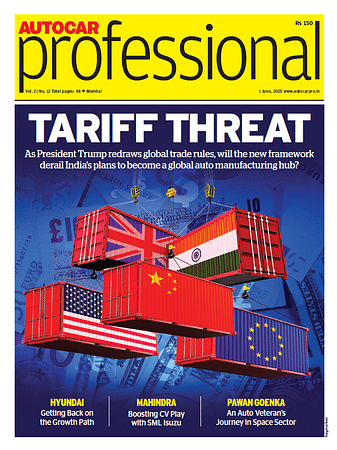CareEdge Report: China’s Rare Earth Element Curbs Disrupt Indian Auto Supply Chain
Rating agency CareEdge cautioned that inventories of rare earth magnets may taper off by mid-July 2025 for certain automotive applications, following the export restrictions from China and ensuing shipment delays.
China's stringent export controls on seven rare earth elements imposed in April 2025 are disrupting Indian automotive supply chains, with potential production curtailments expected to begin in July 2025 as inventory levels deplete, rating agency CareEdge warned. The restrictions affect elements commonly used in high-performance magnets critical to electric, internal combustion engine, and hybrid vehicle production.
The Chinese government introduced export licensing requirements on April 4, 2025, for neodymium, dysprosium, terbium, samarium, gadolinium, praseodymium, and cerium. Chinese exporters must now secure special licenses, end-user certificates, and government-to-government approvals before shipping these materials abroad.
China controls 70 percent of global rare earth element production and 90 percent of processing capacity. India imported nearly 90 percent of its permanent magnets containing rare earth elements from China during fiscal years 2024 and 2025, creating significant vulnerability in the supply chain.
None of the export license applications submitted by Indian firms have received approval from China as of June 2025, despite sustained diplomatic efforts. The verification process for detailed end-user information has created considerable delays in shipments.
The disruption extends beyond electric vehicles to encompass traditional internal combustion engines and hybrid models. Rare earth elements are essential components in electric motors, battery management systems, catalytic converters, infotainment systems, power steering units, brake-by-wire systems, and advanced safety sensors.
Higher-end vehicle variants incorporating more rare earth element-dependent technologies will likely face the initial impact. Original equipment manufacturers may shift production focus toward mid-range or base models to address supply constraints.
Indian automakers are considering importing fully assembled components and sub-systems from China as a short-term mitigation strategy. This approach aims to maintain production continuity while alternative sourcing strategies are developed, though it will increase input costs due to higher import duties and logistics expenses.
The timing presents particular challenges for India's electric vehicle sector, which achieved approximately 2.03 million unit sales with a compound annual growth rate of 63 percent over the five years ending fiscal year 2025. The electric two-wheeler segment drove much of this growth with a 112 percent compound annual growth rate.
India is pursuing multiple response strategies including diplomatic engagement with China to expedite pending approvals and streamline licensing procedures. The government is considering commercializing magnet manufacturing technologies currently held by select public sector entities as an immediate contingency measure.
Alternative sourcing efforts are underway with potential suppliers in Vietnam, Australia, and the United States. However, these sources currently lack sufficient processing capacity to meet global demand requirements in the near term.
Long-term resilience strategies include accelerating domestic rare earth element supply chain development through exploration of rare earth element-rich regions, incentivizing private sector participation in mining and processing, investing in research and development for alternative technologies, and establishing strategic international partnerships.
"India's rare earth element crisis is not merely a supply chain disruption but a strategic wake-up call. The bottleneck created by China's export licensing regime has exposed the fragility of India's EV ambitions, with inventories depleting and approvals stalled. This crisis underscores the perils of over-dependence on a single geopolitical actor for critical inputs. The path to resilience lies in building a full-spectrum domestic REE ecosystem. Strategic reserves, public-private R&D, and global partnerships must converge into a coherent national strategy," said Madhusudhan Goswami, Assistant Director, CareEdge Ratings.
"China's April 2025 export restrictions on REEs, which account for 70% of global production and 90% of processing, have disrupted global auto supply chains. India imported nearly 90% of its permanent magnets containing REEs from China during FY24 & FY25. The shortage threatens the production of EV, high-end ICE and hybrid vehicles starting in July 2025. Accordingly, timely resolution of the matter would be of utmost importance, especially for the Indian automotive sector in FY26," said Arti Roy, Associate Director, CareEdge Ratings.
The restrictions are widely interpreted as a strategic response to heightened tariffs imposed by the United States on Chinese imports. China's dominance in the rare earth elements market stems from decades of targeted investments, lenient environmental regulations, and robust state-backed industrial policies.
The impact threatens to ripple through the entire automotive value chain, affecting not only original equipment manufacturers but also the component ecosystem, particularly manufacturers of electric motors, battery management systems, and advanced safety systems.
RELATED ARTICLES
Cosworth Expands Role in 24 Hours of Le Mans, Supplying Electronics to 85% of Grid
The company's return as a powertrain supplier marks its first engine entry at Le Mans since 2015.
TVS Supply Chain Solutions Head of Strategic Initiatives Resigns
Ravi Prakash Bhagavathula steps down from senior management role after seven years with the company, citing pursuit of p...
Mahindra Logistics Opens New Warehousing Facility in Phaltan for Cummins India
The logistics company has launched a 300,000 square foot facility in Maharashtra to support Cummins India's nationwide d...





 By Shruti Shiraguppi
By Shruti Shiraguppi
 12 Jun 2025
12 Jun 2025
 1723 Views
1723 Views







 Angitha Suresh
Angitha Suresh


